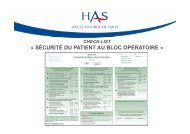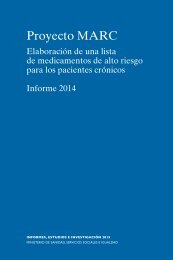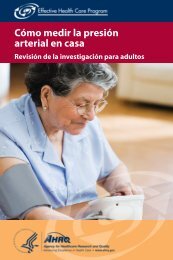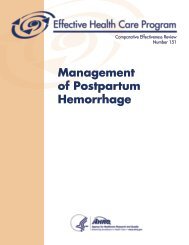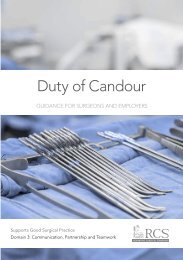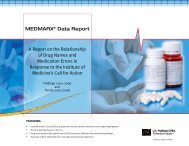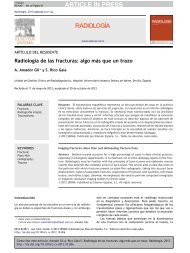for Invasive Procedures (NatSSIPs)
Z3q53
Z3q53
You also want an ePaper? Increase the reach of your titles
YUMPU automatically turns print PDFs into web optimized ePapers that Google loves.
OFFICIAL<br />
4.9 Time out<br />
All patients undergoing invasive procedures under general, regional or local<br />
anaesthesia, or under sedation, must undergo safety checks immediately be<strong>for</strong>e the<br />
start of the procedure: the time out. Along with the sign in and sign out, this is based<br />
on the checks in the WHO Surgical Safety Checklist and <strong>for</strong>ms part of the Five Steps<br />
to Safer Surgery. Noise and interruptions should be minimised during the time out.<br />
1. Participation of the patient (and/or parent, guardian, carer or birth partner) in<br />
the time out should be encouraged when possible.<br />
2. The time out should not be per<strong>for</strong>med until any omissions, discrepancies or<br />
uncertainties identified in the sign in have been fully resolved. On rare<br />
occasions, the immediate urgency of a procedure may mean that it may have<br />
to be per<strong>for</strong>med without full resolution of any omissions, discrepancies or<br />
uncertainties. Such occurrences should be reported as safety incidents.<br />
3. Any member of the procedure team may lead the time out. All team members<br />
involved in the procedure should be present at the time out. The team member<br />
leading the time out should verify that all team members are participating. This<br />
will usually require that they stop all other tasks and face the time out lead.<br />
4. A time out must be conducted immediately be<strong>for</strong>e skin incision or the start of<br />
the procedure. It should include when relevant, but is not limited to, checks of:<br />
• Patient’s name and identity band against the consent <strong>for</strong>m.<br />
• The results of any relevant tests that must be present and available in<br />
theatre, e.g. imaging, hearing tests and eye tests.<br />
• The procedure to be per<strong>for</strong>med.<br />
• Verification of surgical site marking.<br />
• Operator:<br />
o The anticipated blood loss.<br />
o Any specific equipment requirements or special investigations.<br />
o Any critical or unexpected steps.<br />
• Anaesthetist:<br />
o Any patient specific concerns.<br />
o Patient’s ASA Physical Status.<br />
o Monitoring equipment and other specific support, e.g. blood<br />
availability.<br />
• Scrub practitioner or operator’s assistant:<br />
o Confirmation of sterility of instruments and equipment.<br />
o Any equipment issues or concerns.<br />
• Surgical site infection:<br />
o Antibiotic prophylaxis.<br />
o Patient warming.<br />
o Glycaemic control.<br />
o Hair removal.<br />
• VTE prophylaxis.<br />
• Patient allergies.<br />
38



